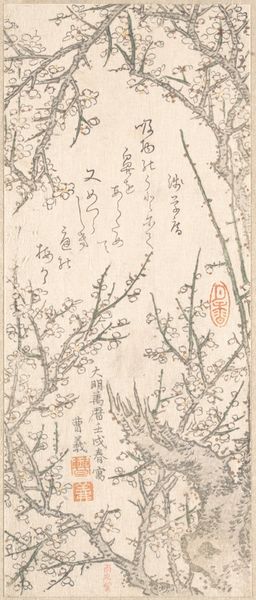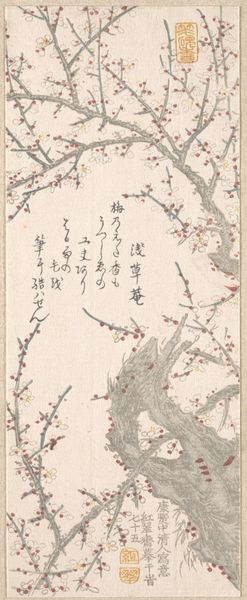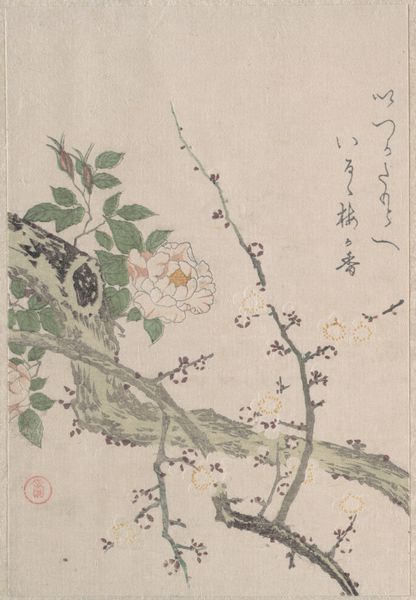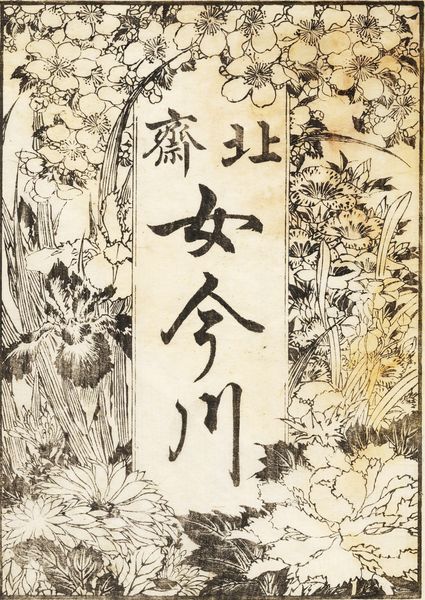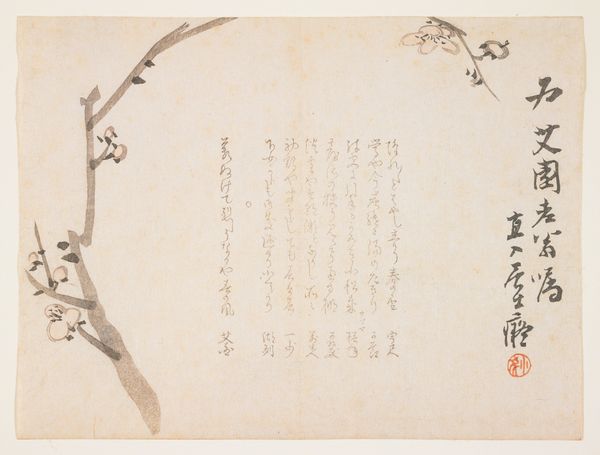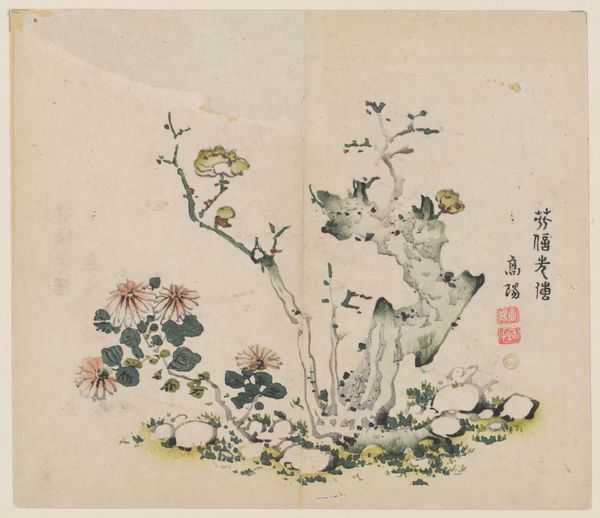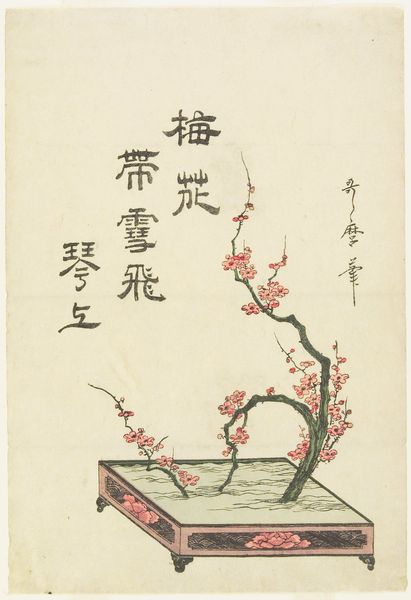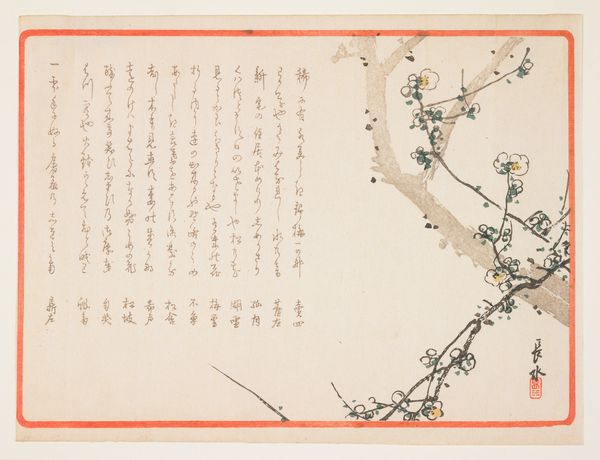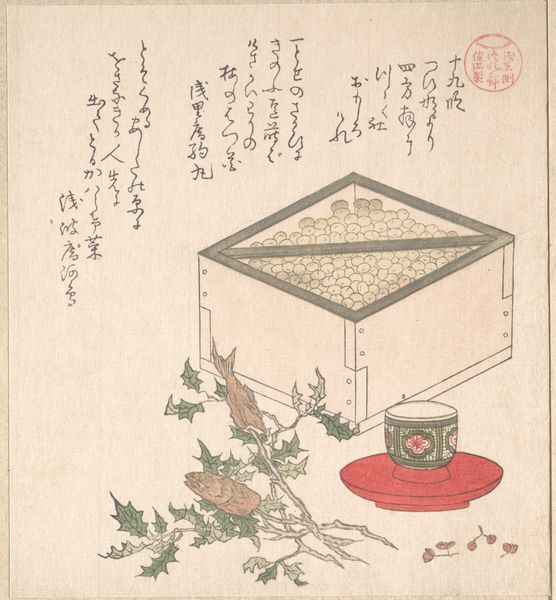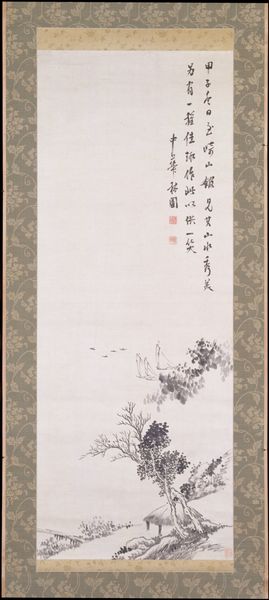
print, woodblock-print
# print
#
asian-art
#
landscape
#
ukiyo-e
#
woodblock-print
#
orientalism
#
line
Dimensions: 8 x 3 9/16 in. (20.3 x 9 cm)
Copyright: Public Domain
Curator: Looking at this woodblock print, I'm struck by the feeling of quietude. It's called "Plum Tree in Blossom." It was created by Kitao Shigemasa sometime between 1739 and 1820. Editor: Yes, it definitely evokes a sense of stillness. The subtle lines, almost like a drawing, make the blossoms feel quite delicate and ephemeral. There’s something about that empty space too. It almost hums with potential. Curator: The empty space, in Japanese art, it’s not really “empty.” It’s about *ma,* a pregnant void suggesting possibility and the flow of time. And consider the plum blossoms themselves. They’re laden with symbolism; a representation of perseverance, hope, even beauty born of adversity. Plum trees blossom even in winter, after all. Editor: I'm also intrigued by how these images functioned within society. Woodblock prints like these became incredibly popular, a mass-produced art form affordable to many. Did Shigemasa use his art to shape perceptions, offer political commentary, or was it simply a reflection of popular taste? Curator: Shigemasa worked in a period where sumptuary laws governed displays of wealth, these kinds of artworks, because of their affordability, circumvented those rules while reflecting desires for sophistication, artistic skill, cultural awareness. Editor: Right. And ukiyo-e prints created a feedback loop. Images, even idealized, affected public sentiment about everything from beauty to nature. We see ourselves mirrored in the art we consume and art has consequences within our societies, shaping desire, value. Curator: Precisely. Consider the use of linear perspective in relation to how Eastern eyes were starting to interpret, appropriate Western aesthetic values…It’s really complicated and multifaceted, just like those blossoms. Editor: This artwork then prompts an interesting question. Was Shigemasa making a statement or recording it? The answer probably lies somewhere in the delicate balance he struck.
Comments
No comments
Be the first to comment and join the conversation on the ultimate creative platform.
